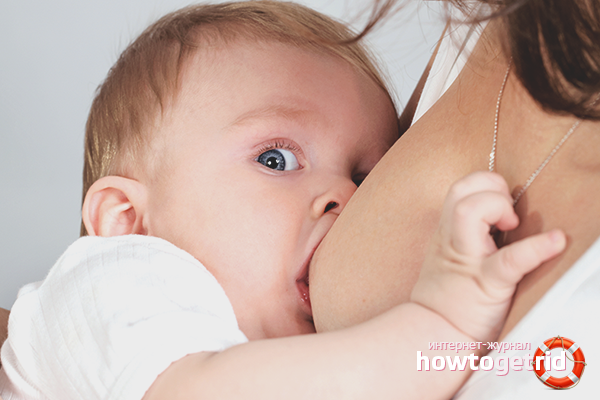The content of the article
Pediatricians like to scare young mothers. A woman must have eaten something harmful if her child has reddened cheeks or bloating. Is the baby growing slowly and gaining weight? The mother is guilty, who feeds the baby poorly. After such a remark, the parent begins to panic. What if the newborn really suffers from a constant feeling of hunger? How to understand that a child is getting enough milk or is malnourished?
Wet method
A healthy and well-fed baby urinates 8 to 12 times a day. Allocations should be transparent, similar to water, without a sharp unpleasant odor. At one time, the body of the newborn releases about 30 ml of urine, and from 250 to 300 ml per day.
Mothers who are afraid that the child is undernourished are advised to collect wet diapers. Pampers with urine are placed in a plastic bag so that the liquid does not evaporate. At the end of the day, when the baby falls asleep, diapers are counted and then weighed. If they become 300 g heavier, then the child has enough milk.
Instead of diapers, diapers or gauze panties are used. A woman sets aside one day and devotes it to observing a newborn. Mom refuses for a day from diapers. Instead, he puts on a child’s home-made diapers from a diaper or piece of cloth and changes them immediately after getting wet. If you had to change your baby at least 10 times a day, there is no reason to worry.
Doubting mothers are advised to carefully study the baby's feces. Newborns who are less than a month old defecate 4–5 times a day or after each feeding. Baby feces are liquid, similar in consistency to mucus. In the first week or two, they are dark, then turn light brown or cream. In the feces of the newborn, lumps or granular inclusions, which are considered the norm, can be found.
When a child is 1–1.5 months old, his intestines begin to rebuild. Some infants defecate only 2-3 times a day. Mom should worry if the baby's feces become hard, and when defecating, the baby cries. It is likely that the baby receives little milk, which is why the digestive organs are disturbed and constipation occurs.
A green shade of feces indicates a lack of "back", more fat milk. In order for the child to get saturated and nutritious food, mother is advised to express before feeding. Not completely, but only until the moment when yellow milk appears.
Weekly Weighing
Once every 2-3 months, young mothers are admitted to the pediatrician, where the baby is weighed and his height is measured. The doctor calculates how many kilograms the child has gained, and draws conclusions whether he has enough milk or not. This method can be used at home.
A woman will need scales for which the error does not exceed 5 g. Recommend models with the function of zeroing containers.
The baby is weighed before and after feeding. See how much milk he ate at a time. Babies from 1 to 3 months should suck 100-180 ml from their mother’s breasts. The norm for older children is 190–240 ml.
The scales are covered with a sheet, the weight of the fabric is zeroed. A child is placed on top, indicators are recorded. After feeding, the baby is not changed, but returned to the scales again. The second digit is fixed and the first is taken from it. Moms are advised to draw graphs with curves to make it easier to keep track of serving sizes.
The method gives unreliable indicators if:
- The child at the time of the second weighing had a wet diaper.
- Mom dressed the baby in another costume or gave a rattle in her hands.
- The baby is not applied to the breast on schedule, but on demand.
In the latter case, do not waste time weighing.Children who receive breasts upon request can eat 50 ml of milk or 200 at a time. It all depends on the hunger and the baby’s mood. Scales will not help mom determine if the baby is eating or not.
More reliable results are obtained by mothers who weigh the babies once a week or a month. For seven days, kids gain 125-130 g. This is the minimum. If more, that's okay. Abnormal values are considered below 95–90 g. They signal that the child is not enough food, so he is slowly growing.
Too impressionable and nervous mothers are advised to get the scales once a month. The baby can get sick and gain only 90-100 g in a week, and then he will recover, and the body will compensate for everything. The main thing is that in a month the baby’s weight increases by at least 500 g. If the indicators are not lower than normal, mother is advised to relax and not listen to pediatricians scolding her for poor lactation.
Sometimes even weighing is not an indicator. Some babies inherit an asthenic physique from their parents. Against the background of chubby peers, such babies look thin, if not skinny. Gain weight slowly and grow. But mothers of active and peppy babies who do not complain about well-being are advised not to worry. Not all children must meet standards.
Watch mom
It is easy to distinguish “hungry” babies from “well-fed” ones. In babies who eat a daily norm of milk daily, pink and smooth skin. It is soft to the touch, with a pinkish tint. Resilient and elastic.
Mom is advised to pinch the baby slightly on the arm or leg. Choose a skin area that fits snugly to the bones. For example, the forearm. It is not necessary to squeeze fingers tightly so as not to hurt the baby. Just squeeze for a second and let go. If the mother felt a layer under the skin, and the area quickly smoothed out, and there was not even a red spot left, the child is completely healthy and does not need additives.
It is possible to determine that the baby is full, according to other signs:
- The eyes of a newborn are shiny.
- When a child cries, he develops tears.
- The skin in the fontanel area is elastic, there are no strange “dents” and pits.
Kids after a hearty lunch or breakfast quickly fall asleep. A child who does not satisfy his hunger becomes moody and cries a lot. Tantrums do not always indicate a shortage of milk. Sometimes newborns cry because of stress or lack of attention, fear or crying.
A hungry child first whimpers or sobs for 5–7 seconds to attract the attention of the parent. Then it pauses for a moment. Mom, going to the bed, notices that the baby opens his mouth wide, as if asking for a chest. Crying resumes literally after a minute and becomes uninterrupted.
The infant, who is short of milk, tosses and turns with anxiety during feeding and waves its arms, and at the very end begins to jerk its legs.
The cheeks of a well-fed baby turn pink. He languidly covers his eyes and immediately begins to doze off. Some babies fall asleep while feeding. It is normal if a child releases whitish foam from his mouth after breakfast or lunch. This leaves excess milk. You need to worry if the baby constantly spits up.
Healthy children who do not complain of malnutrition sleep for 2–4 hours and then ask for breasts. Night rest lasts longer, but not always. A shortage of sleep, lasting less than 40 minutes, indicates the lack of milk, and the restless behavior of a child who tosses and turns, whimpers or screams loudly for no apparent reason.
False alarm
Young mothers are suspicious and impressionable. After receiving a reprimand from the pediatrician, they try to find symptoms in the child that indicate a lack of milk, and wind up even more. But most of the signs are false.
Milk color
Women are advised to express a glass of milk. The kid receives the wrong and too lean food if it is translucent with a bluish tint.In fact, the color of milk does not affect its value. The product produced by the mother's body has enough vitamins, fats and minerals. The female body knows best how much the child needs calcium, protein and other elements. A bluish tint indicates that Mom has a lot of front diet milk.
Baby can't live without a chest
No need to panic and blame yourself for all sins. Probably, the child feels comfortable only next to his mother. And feeding is one of the most intimate processes during which endorphins are produced in the children's body. Hormones are responsible for a sense of joy and happiness, so the baby is in no hurry to part with a source of good mood.
Infants who are no more than 1–2 months old require a breast up to 20 times a day due to the small volume of the stomach. Only 15-30 ml of milk is placed in it, which after 20 minutes is in the intestine. The crumbs have to apply to the mother’s mammary glands, but this does not mean that they do not overeat.
Special kids
Babies who were born prematurely are weaker than their peers. They often take five-minute breaks during feeding. Moms should not think that they have little milk. It's just hard for crumbs to satisfy their hunger in one sitting. Such babies need a short rest in order to catch their breath and gain strength.
Large children do not always have “big” appetites. They eat standard 50–180 ml at a time. The usual portion is enough for babies, you do not need to milk them with mixtures, make them eat mashed vegetables or cereals.
Lack of strange sensations
In the first weeks, the body of a lactating woman produces milk under the influence of hormones. The chest during this period greatly swells, lactation is accompanied by unpleasant sensations. Milk constantly leaks and drips from the nipples. If these symptoms have disappeared, then my mother’s body has adapted to the needs of the baby. Now there will be as much milk as the baby can eat. And do not think that the child remains hungry.
A young mother is like a first-grader who has to get a lot of interesting and useful knowledge. She will learn to change clothes and properly feed the baby. He learns that children are individual, and not all of them meet the standards. Understand that in 95 cases out of 100, malnutrition is a fiction of a disgruntled pediatrician. And most importantly, the child grows healthy and active.
Video: how to determine if a child has enough milk










Submit